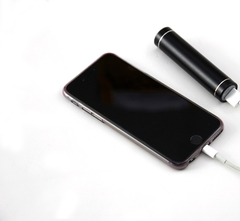Global Scans · Batteries · Weekly Summary

- [New] Battery electric vehicles (EVs) are poised for similar ascension, with the International Energy Agency projecting that they will reach 65% of all car sales by 2030, will achieve average annual growth rates of 25% between now and then, and will reach 1 billion adopters by 2040. PubMed Central (PMC)
- [New] Utility-scale battery storage capacity will surge from a negligible 5 GWh in 2024 to 1,500 GWh by 2060. DNV
- [New] A first deep strike battery with Tomahawks on the mobile Typhon system would be set up as early as 2026. World Socialist Web Site
- [New] AI closed-loop control will become standard in battery manufacturing by 2026, slashing electrode-process downtime by 30%. Devox Software
- [New] The next five years will bring transformative changes in drone technology driven by advances in AI, battery innovation, swarm capabilities, and payload versatility. Tech Times
- [New] By 2050, consumers would have installed 87 gigawatts of rooftop solar, while there would be 27 gigawatts of small-scale batteries. Australian Broadcasting Corporation
- [New] Australia will need to rely more heavily on big solar farms, batteries and households if it is to get 82% of its electricity from renewable sources by 2030. Australian Broadcasting Corporation
- [New] The Silver City Energy Storage Centre will be able to store energy for about eight hours, longer than lithium-ion batteries, which typically hold about four hours of charge in large grid-scale batteries. Australian Broadcasting Corporation
- [New] A new NMC4 battery generation, unveiled at the UITP Summit 2025 and available from 2026, delivers nearly 13% higher energy density and ranges of up to 600 km with fast charging capability up to 300 kW. Automotive World
- [New] South Korean industrial group will establish a joint venture with a Belgian materials technology company to produce next-generation battery components. Automotive World
- The decade will see massive manufacturing investments totaling $200+ billion globally in battery production capacity. Futurist Speaker on AI Leadership, Future of Work, Futu
- Fastest-Growing Subsegment: Solid-State - Solid-state battery equipment will record a 34.5% CAGR through 2034, moving from pilot to initial production. Straits Research
- Tesla recalls approximately 10,500 Powerwall 2 AC battery systems in the U.S. due to fire risks linked to a third-party supplier's defective lithium-ion cells. OpenTools
- As electric vehicle adoption accelerates across global markets and manufacturers broaden their EV portfolios, the demand for sustainable battery materials sourced from recycling will grow exponentially. Advanced Auto Bat
- Despite environmental lawsuits and technical uncertainty, CTR's IPO signals growing confidence that California's lithium ambitions could soon rival Arkansas's in the race to build a domestic battery supply chain. SME Studios - Jobs of Tomorrow
- Tesla's planned battery production capacity of 3 terawatt-hours annually by 2030 alone requires approximately 180,000 tonnes of lithium hydroxide equivalent per year. Discovery Alert
- By Battery Chemistry: Lithium-ion (Li-ion) dominated with an 84% share in 2025; Solid-state equipment will grow the fastest at a 34.5% CAGR. Straits Research
- The expectation of a demand boom in 2026 is based on assumptions about several developments: On the one hand, the demand for lithium-ion batteries for electric vehicles continues to grow, even if the dynamic temporarily weakens in some markets. GOLDINVEST.de
Last updated: 14 December 2025
